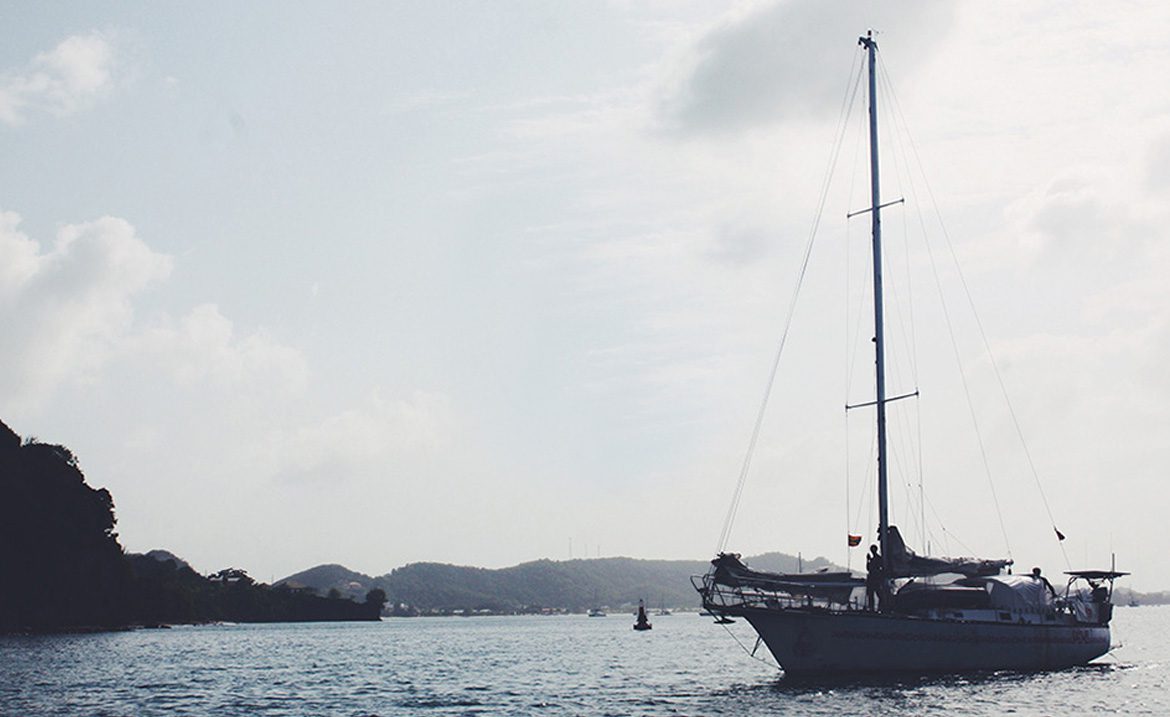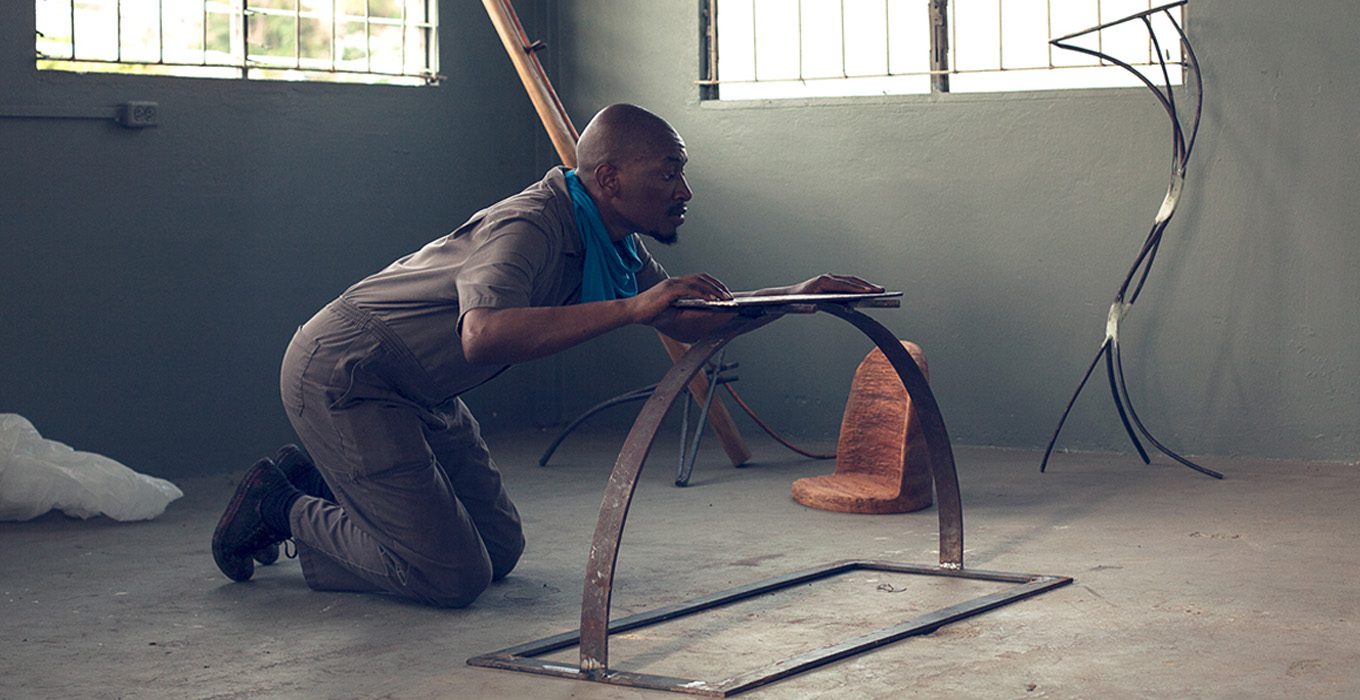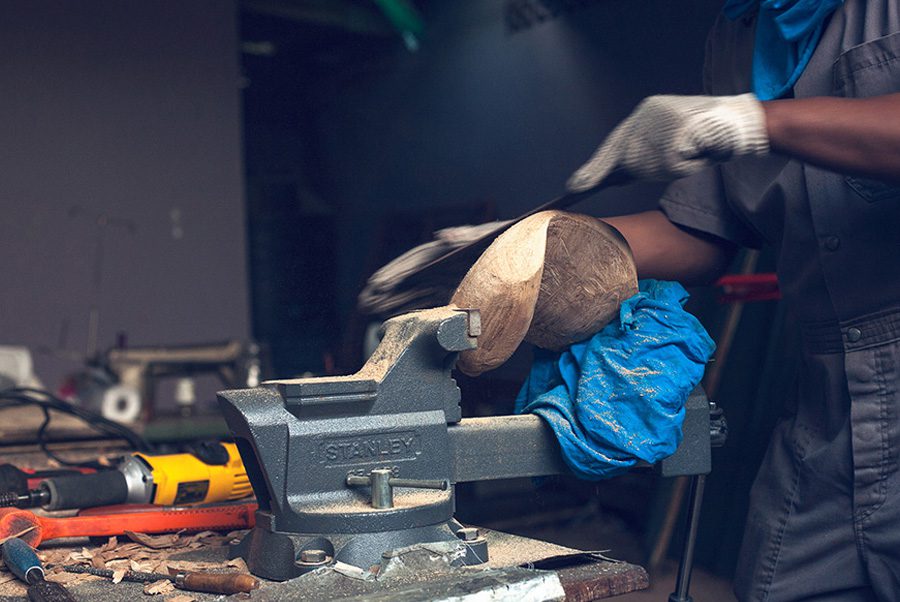

June 03, 2014
We are always searching for home and our concept of home is always changing. Home can be a country, a people, a lover, a place you grew up in, a place you create for yourself. Home is many things and it is never static. Objects are home too – a rocking chair, a bookshelf of treasured tomes, a grandmother’s knick-knacks. They form part of our consciousness, things that symbolize comfort, belonging and security. What happens when you distort or change these objects that symbolize home for us? How does it change the way we see home, the way we see ourselves? These are the ideas Clayton Rhule explores in Dwelling, his first exhibition in three years. We chatted with Clayton about his work and his creative process.
“I am a dreamer. All that I do somehow starts there. I call it the dream space.”
Tell us about your most recent show, Dwelling. What does the name mean to you?
CLAYTON: I am a dreamer. All that I do somehow starts there. I call it the dream space. Before you dream sometimes there is a trigger – you think about food and maybe have dreams of gingerbread houses. My trigger was making furniture for my home. The idea of furniture started to evolve and mix with my creation of art. Dwelling represented home for me – the space that I live in my mind, the space that I document my thoughts, my sketchbook and the space that I make my thoughts real and tangible.
Is the work presented furniture or sculpture? How do you hope people interact with it?
CLAYTON: What is furniture? To me it is its function – a chair to sit on, a shelf to rest books on – so the work is neither furniture nor sculpture, it swims in between. When people experience the work I want their preconceived ideas to be tested and I want them to leave learning something new about themselves and what they saw.
There is a relationship that we instinctively have with objects whether they are useful or not. When the viewer moves around the objects, it is like a dance and if the form of these objects is not as you expect, you move differently towards and around them. That’s what I want to create: the play between negative and the two positive objects in the space – the mobile (the person walking around the object) and the fixed (the object placed within the space).
You are a multidisciplinary maker, sculptor and designer, working across several different media. How do each of your disciplines and interests affect and inform each other?
CLAYTON: Firstly, I work in one discipline – Creative. All the supposed areas to me are mediums. So in essence, once I master a medium, I can create using it. It really depends on what brings across the idea best. On another note, the processes used in each discipline are different and teach you different things. I think advertising drives you to work out processes, fine art develops intuition, photography works on your ability to see, motion helps you tell stories. Well at least it is so for me.
Would you describe your design and making process?
CLAYTON: That’s an interesting question. It really changes based on what I am creating, however there are common areas:
Play: Being intuitive and not being tied down to any specific thing. You put down the first thing that comes to mind. Nothing is silly and nothing is irrelevant.
Research: If you are communicating something that involves the interaction of people then you need to understand how they feel and what will trigger responses, so research is important to me.
Create: Build whatever it is and leave it. Explore it, change it and leave it again.
Test it. Does it answer your question or doesn’t it?
Feedback: Give people the opportunity to relate to your creation. It is made for them. It doesn’t matter the response, once there is a response you have accomplished your goal.
You’re Jamaican, living in Trinidad but you’ve also lived in St. Lucia.
CLAYTON: What do you think about the idea of the Caribbean aesthetic? Do you think there is one? If so, what does it mean to you?
The Caribbean aesthetic is not just one thing. It is the mixture of so many different cultures and experiences. The thing to me that I find brings it all together is history, mainly the mix of our African heritage and our colonial past. Its like a hybrid of cultures, a melting pot.
Dwelling runs from 28th May to 25th June 2014 at Softbox Studios and Gallery, Alcazar Street, St Clair.


INTERVIEWER: AYANNA GILLIAN LLOYD PHOTOGRAPHER: KIBWE BRATHWAITE